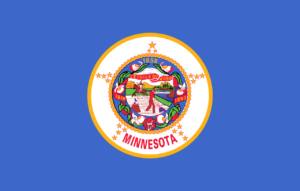Minnesota Medigap plans do not go by the standardized  Medigap coverage chart. Although this does make it a little more difficult to compare them, since most of the plan information is centered around the coverage chart that 47 of the states use, it definitely can be done once you have an understanding of what the plans cover and how they work.
Medigap coverage chart. Although this does make it a little more difficult to compare them, since most of the plan information is centered around the coverage chart that 47 of the states use, it definitely can be done once you have an understanding of what the plans cover and how they work.
First and foremost, the plans are still standardized. In other words, even though they use a different coverage chart, the MN Medigap plans are still the same from company to company. There are two plans offered in Minnesota – Basic Plan and Extended Basic Plan. Then, on top of those two plans, insurance companies can sell you riders to complement that coverage.
Both MN Medigap plans – Basic plan and Extended Basic – cover “Basic Benefits”. Basic benefits include:
- Inpatient hospital care (the 20% Medicare does not cover at the hospital)
- Medical costs (the 20% Medicare does not cover under Part B)
- Blood (up to 3 pints of blood a year)
- Part A hospice cost-sharing
- Part A and B home health services and supplies
Again, the above “basic benefits” are covered by all MN Medigap plans. The two plans are explained in more detail below:
Basic Plan: What is Covered?
- Basic benefits (explained above)
- Part A skilled nursing facility coinsurance
- 80% of a foreign travel emergency
- 20% of outpatient mental health
- Medicare-covered preventive care
- 20% on physical therapy
- State-mandated benefits (includes diabetic equipment, routine cancer screening, reconstructive surgery and immunizations).
Extended Basic Plan: The Extended Basic plan is a higher level of coverage. In addition to the areas of coverage listed above on the basic plan, the Extended Basic plan also covers:
- the Part A deductible ($1632 per benefit period in 2024)
- the Part B deductible ($240/year in 2024)
- 80% of usual and customary fees
- 80% coverage while in a foreign country
In addition to the coverage levels dictated above, insurance companies also have the option of offering 4 additional riders to their plans. These riders can be added to the “basic” plans to improve/enhance that coverage. Those riders are:
- Part A deductible coverage – this is the inpatient hospital deductible
- Part B deductible coverage
- Coverage of usual and customary fees
- Coverage of non-Medicare preventive care (Does Medicare Cover Preventive Care?)
How to Compare Minnesota Medigap Plans
Again, although the Minnesota Medigap plans differ from plans offered in 47 other states, they are standardized. So a “basic” plan with one company is the exact same benefits as a “basic” plan a different company. Additionally, the plans can all be used at any doctor/hospital that accept Medicare. Medigap plans do not have networks. And, they pay claims though the Medicare “crossover” system, Medicare’s electronic payment system. The only differences are in price and company rating/reputation.
When you are a MN resident turning 65 or comparing plans, it is a good idea to compare “like” coverage. It is difficult to decipher which plan is the best “deal” if you are comparing plans with different coverage levels or riders.
Overall, it is important for MN residents to compare the plans that are specific to their state. It is easy to get confused, since most of the information published – online and otherwise – is centered around the other standardized plans that are not available to MN residents.
When comparing any Medigap plans, it is a good idea to use an independent broker to help you compare multiple options in a centralized place. Request a list of Medigap quotes specific to your age and zip code.

